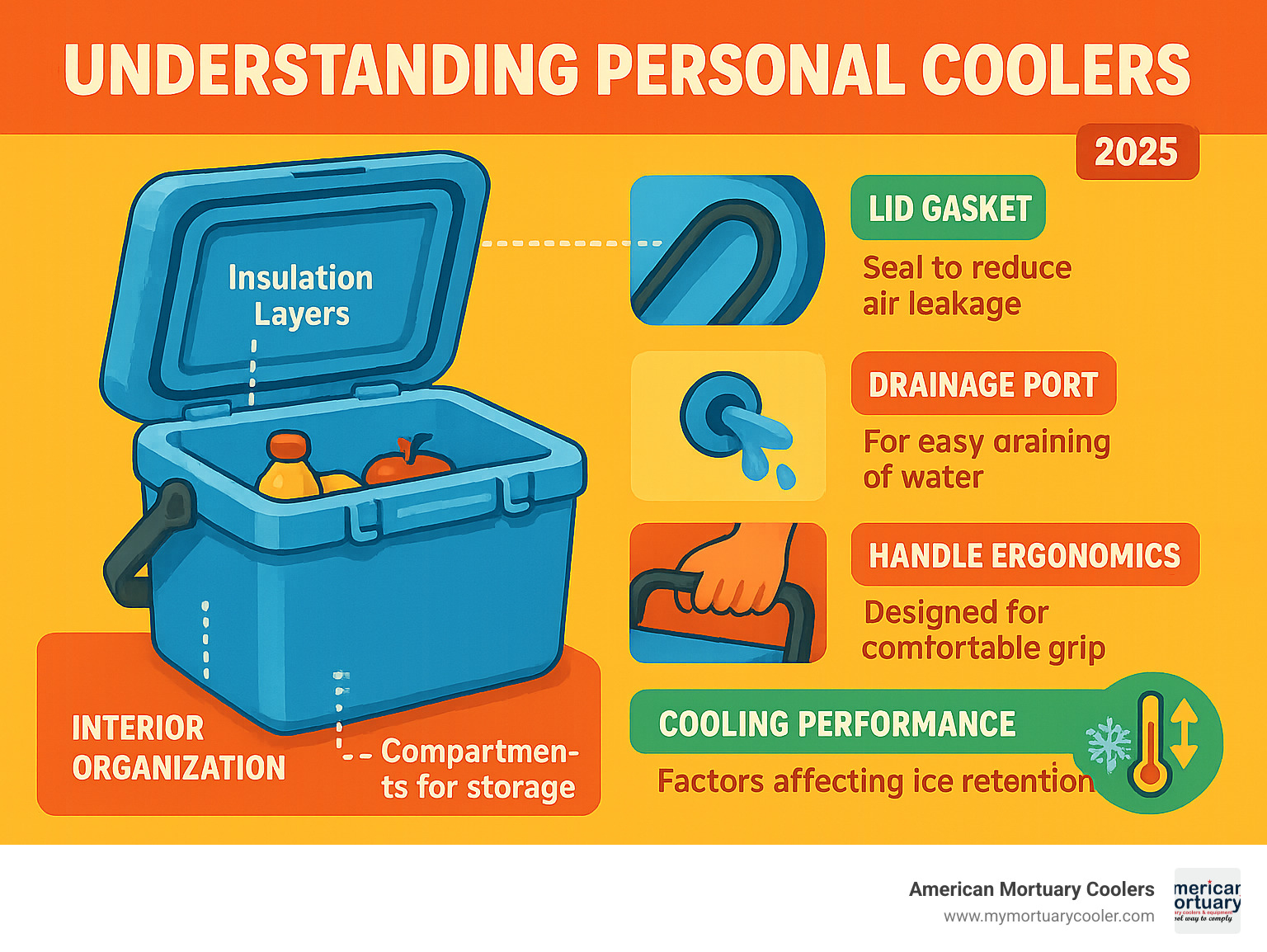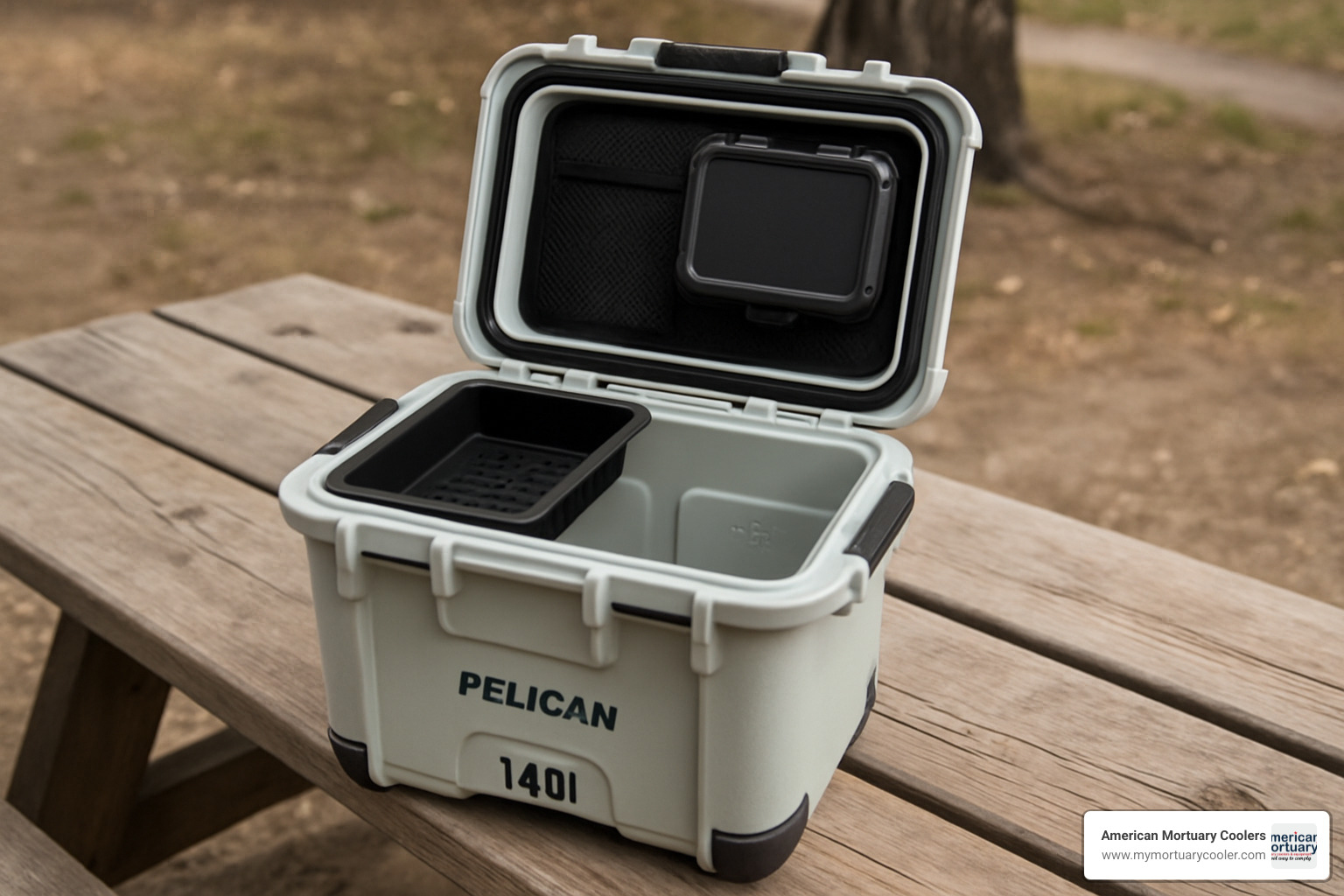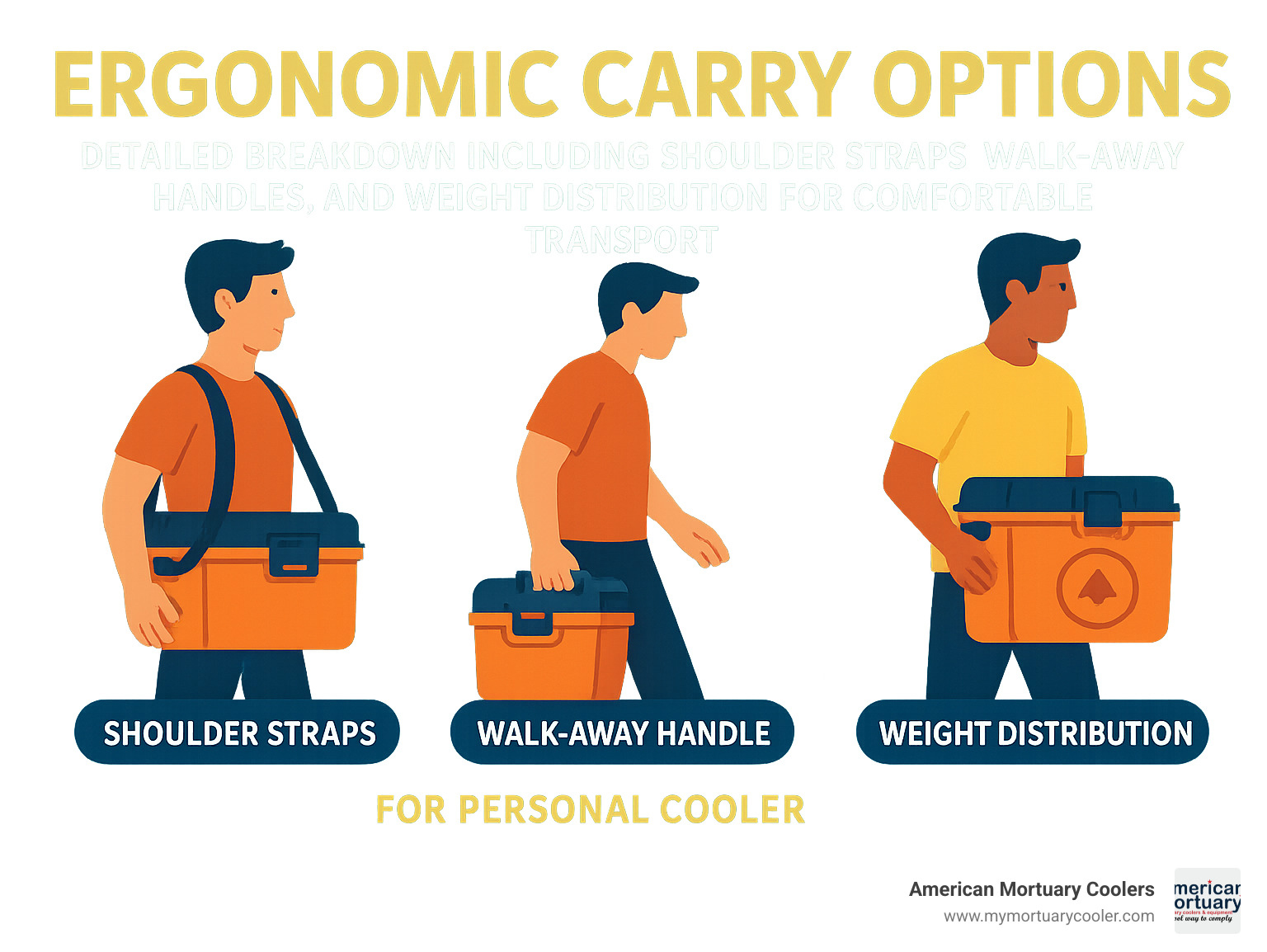
A Comprehensive Guide to Choosing the Best Personal Cooler
Why Personal Coolers Are Essential for Modern Life
A personal cooler is a compact, portable cooling device designed to keep food and beverages cold for individual use or small groups. These coolers typically range from 4-20 quarts in capacity and are built for easy transport, making them perfect for work lunches, day trips, sports events, and outdoor activities.
Key Personal Cooler Types:
- Hard-sided coolers - Durable plastic construction with thick insulation (12-72 hour ice retention)
- Soft-sided coolers - Lightweight fabric design with foam insulation (6-24 hour cooling)
- Electric coolers - Battery or plug-in powered units that don't require ice
- Wearable coolers - Body-worn thermoelectric devices for personal comfort
Popular Capacity Ranges:
- 4-8 quarts: Single person lunch/snacks
- 9-14 quarts: Day trips, small groups
- 15-20 quarts: Extended outings, weekend use
With summer heat becoming more intense, personal coolers have evolved from simple lunch boxes to sophisticated cooling systems. Some models like the Pelican 14QT can retain ice for up to 36 hours, while innovative units like the IcyBreeze combine beverage cooling with personal air conditioning. Most lunchbox coolers are used over 200 times per year, making durability and efficiency crucial factors.
We're American Mortuary Coolers, a national-level supplier specializing in temperature-controlled solutions including personal cooler systems for various applications. With experience in cooling technology and equipment durability, we'll guide you through choosing the right personal cooler for your specific needs and budget.

What Is a Personal Cooler and How Does It Differ?
A personal cooler is your lunch box's super-powered cousin. While they're roughly the same size - typically holding 4-20 quarts - personal coolers pack serious cooling technology into that compact frame. These sophisticated cooling systems use polyurethane foam insulation that's 1-2 inches thick, creating an incredibly efficient cooling chamber.
Personal coolers are built for everyday frequency - most people use them over 200 times per year. That's nearly daily use, which means durability and portability matter more than raw ice-holding capacity. Unlike massive family coolers that get dragged out for special occasions, personal coolers live in your daily routine.
Main Types of Personal Coolers
Hard-sided personal coolers are the workhorses, built with injection-molded plastic and serious insulation. They keep ice solid for 24-72 hours and are tougher than soft-sided options. Many include dry storage compartments for items you want cold but not wet.
Soft-sided personal coolers win the portability contest. Made with fabric exteriors and foam insulation, they fold when empty and won't break your back. Ice retention drops to 6-24 hours, making them perfect for daily lunch use.
Electric personal coolers use thermoelectric cooling or compressor technology to maintain temperatures without ice. No more soggy sandwiches or emergency ice runs. They cost more upfront, but eliminate ongoing ice costs.
Wearable personal coolers are battery-powered cooling plates that strap to your body, providing hands-free cooling for 3-4 hours. They focus on personal comfort rather than food storage.
Hybrid personal coolers combine traditional cooling with electric features. The IcyBreeze cooler keeps drinks cold while functioning as personal air conditioning.
Traditional Ice vs. Electric Personal Cooler
Traditional ice-based personal coolers stick with what works. The Pelican 14QT maintains ice for up to 36 hours when packed right. The IcyBreeze keeps ice solid for over 72 hours when not running its air conditioning feature. There's something beautifully simple about this approach - no batteries to charge, no power cords to remember.
Electric personal coolers offer high-tech cooling. The Comfort Cooler Mini can cool contents up to 45°F below ambient temperature, running for 3.5 hours on a USB power bank. More sophisticated units like the EverFrost offer four charging options: 95W adapter, car cable, 100W solar panel, or 60W USB-C port.
| Feature | Ice-Based | Electric |
|---|---|---|
| Initial Cost | $50-$200 | $200-$900 |
| Operating Cost | $2-5/week for ice | Electricity/battery cost |
| Ice Retention | 12-72 hours | N/A (continuous cooling) |
| Weight | 3-10 lbs (empty) | 5-15 lbs |
| Power Dependency | None | Battery/outlet required |
The choice often comes down to lifestyle. If you forget to charge devices, traditional ice-based coolers won't let you down. If you want precise temperature control without ice mess, electric models might be worth the investment.
Personal Cooler Buying Checklist: Key Features That Matter
Capacity is your starting point. Most personal coolers range from 4-20 quarts. A 4-6 quart cooler handles a single lunch with drinks, while 8-12 quarts works for day trips. For extended outings or small groups, look at the 14-20 quart range.
Ice retention separates good from great. The Approved Vendor Personal Cooler packs 12-hour ice retention into just 1.77 pounds. Premium models like the Pelican 14QT push that to 36 hours with proper packing.
Insulation quality directly impacts performance. Look for polyurethane foam insulation rather than basic foam padding. The best personal coolers feature 1.5-inch thick walls with freezer-gasketed lids that create proper thermal seals.
Weight matters more than you think. Consider both empty and loaded weight - that lightweight Pelican 14QT becomes much heavier once you add drinks plus ice packs.
Modern personal coolers often include thoughtful extras: dry and wet compartments, built-in cup holders and bottle openers, ergonomic handles or shoulder straps, and quality drain plugs for easy cleaning.
Price brackets break down predictably. Budget options from $50-$100 cover basic coolers for occasional use. Mid-range units from $100-$300 offer premium insulation for regular users. High-end electric or ultra-premium models range from $300-$900.
For detailed guidance on selecting portable coolers, check out our comprehensive portable cooler guide.
Ice Retention, Temperature & Capacity
Ice retention is where personal coolers either shine or disappoint - the difference comes down to smart engineering choices.
The secret lies in insulation thickness and quality. Premium personal coolers use 1.5-inch thick polyurethane walls instead of basic foam padding. This commercial-grade insulation, paired with freezer-gasketed lids, creates the thermal barrier that separates weekend warriors from serious outdoor enthusiasts.
Real-world performance tells the story. The Pelican 14QT delivers up to 36 hours of ice retention. The IcyBreeze maintains ice for well over 72 hours when not running air conditioning. Even compact models like the Approved Vendor 4.8QT manage 12 hours of cooling.
Environmental factors dramatically impact these numbers. That cooler rated for 24 hours at 70°F might only hold ice for 8-12 hours when temperatures hit 90°F or higher.
The ice-to-contents ratio makes or breaks cooling success. A personal cooler packed with a 2:1 ratio of ice to contents will significantly outperform one with minimal ice.
Smart users pre-chill their coolers overnight and pre-freeze drinks when possible. These simple steps cost nothing but deliver measurable improvements in cooling performance.
Portability & Design Innovation
The best personal cooler designs solve problems you didn't know you had.
The Pelican 14QT's "Walk-Away Cutout" handle design allows comfortable carrying against your leg during longer walks, reducing fatigue that builds up with traditional top handles.
Compartmentalized storage has revolutionized organization. The Pelican 14QT includes a removable inner tray and lid organizer that keeps dry items separate from melting ice. The dedicated dry box protects phones, keys, and other sensitive items from moisture damage.
Wearable cooling technology represents the cutting edge. The Comfort Cooler Mini provides up to 45°F below ambient temperature cooling through a thermoelectric plate weighing just 159 grams. Running for 3.5 hours on a USB powerbank, it can be worn with an elastic Velcro strap for hands-free cooling.
Multi-function features eliminate separate accessories. Many personal coolers integrate bottle openers with magnetic cap catchers, phone slots, and built-in cup holders. The IcyBreeze incorporates an adjustable air-conditioning hose that directs cold air wherever needed.


Top Personal Cooler Brands & Stand-Out Models
After years of working with temperature-controlled solutions, we've identified which personal cooler brands consistently deliver when it counts.
The Pelican 14QT sits at the top of our recommendations for hard-sided personal coolers. Priced between $150-$200, this unit delivers 36 hours of ice retention thanks to its 1.5-inch polyurethane insulation. It holds a 6-pack plus two 1-lb ice packs while keeping dry items separate from melting ice.
Coleman's Pro Series offers exceptional value in 9-quart and 17-quart sizes. Priced between $80-$120, these coolers consistently earn 4.5 to 4.7 out of 5 stars from customers. Coleman has mastered balancing performance with affordability.
Igloo's small coolers under 20 quarts have been keeping worksite lunches cold for over 45 years. Their foam-insulated models, ranging from $50-$80, prove that reliable cooling doesn't have to be complicated.
The IcyBreeze Air-Conditioning Cooler is in a league of its own at $300-$400. This hybrid doesn't just keep drinks cold - it provides personal air conditioning through an adjustable hose. When not using the AC feature, ice retention exceeds 72 hours. For a complete breakdown, check out our detailed IcyBreeze Cooler Review.
The RTIC 20 Can Cooler has built a loyal following among outdoor enthusiasts. Priced between $60-$90, it offers excellent ice retention in a lightweight package that won't weigh you down.
For electric cooling, the Anker EverFrost 30 represents the premium end at $400-$600. The four charging options make it incredibly versatile - 95W adapter, car cable, 100W solar panel, or 60W USB-C port. Built-in tilt protection automatically shuts off the compressor if tipped over 30 degrees.
The Comfort Cooler Mini takes a different approach at just $80. This wearable thermoelectric unit provides up to 45°F below ambient temperature cooling for 3.5 hours, focusing on personal comfort during outdoor activities.
Understanding the price landscape helps set expectations. Budget options from $50-$100 focus on basic ice-based cooling. Mid-range models between $100-$300 add premium insulation and features. High-end units from $300-$900 bring electric power or ultra-premium construction.
Warranty coverage varies significantly. Pelican backs their coolers with minimum 3-year warranties, while Coleman typically offers 1-2 years. Premium electric models often include 3-5 year warranties.
The key is matching your cooler to actual needs rather than getting caught up in impressive specifications you'll never use.
Using, Maintaining & Maximizing Your Personal Cooler
Getting the most out of your personal cooler comes down to developing smart habits. Since most people use their lunch coolers over 200 times per year, a little care goes a long way.
The foundation starts with daily cleaning. After each use, rinse with warm water and mild soap. Skip bleach or harsh chemicals - they can damage seals and insulation. When odors build up, baking soda is your best friend. Make a paste, let it sit overnight, then rinse thoroughly.
Your lid gasket deserves special attention since it keeps cold air in and warm air out. Give it monthly inspection for cracks, tears, or food buildup. A simple wipe with a damp cloth usually works.
Food safety should always be top of mind. Keep your cooler's internal temperature below 40°F. Pack perishables in the coldest spot (usually the bottom) and keep raw meats away from other foods.
Environmental factors make a huge difference. Direct sunlight can cut ice retention in half, so find shade whenever possible. For electric models, ensure cooling vents have breathing room - blocked vents lead to overheating.
Pro tip: pre-freeze your ice packs or water bottles overnight before heading out. The Pelican 14QT works perfectly with two 1-lb ice blocks, giving more consistent cooling than loose ice.
Electric models need special consideration for energy management. The Comfort Cooler Mini draws 14W at startup and 12.5W during operation. Most USB power banks provide 3-4 hours of runtime.
For detailed information about personal refrigerated cooling systems, check out our guide on personal refrigerated cooling systems for hot weather.
Cleaning & Storage Best Practices
Establish a post-use routine that becomes second nature. Empty everything out, rinse with warm water, clean with mild soap, rinse again, and dry completely. Leave that lid slightly open while stored to prevent mold and mildew.
Once a month, treat your personal cooler to a deep clean. Remove all removable parts and clean each piece separately. Use a baking soda solution to tackle stubborn odors.
Off-season storage is straightforward. Find a cool, dry spot and keep that lid cracked open for air circulation. For electric models, charge the battery to 50-75% and set a reminder to top it off every three months.
Electric models like the EverFrost need special attention. Store for 12-24 hours before first use, ensure full charge before putting away, and drain internal water before long-term storage.
Safety & Efficiency Tips for Peak Performance
Electric personal coolers have specific needs. Never block cooling vents - your compressor needs airflow. Blocked vents lead to overheating and permanent damage.
Most electric coolers include battery protection settings (L/M/H for Low, Medium, High). When plugged into your car, use Medium or High. When running off battery packs, stick with Low to prevent over-discharge.
Wearable coolers like the Comfort Cooler Mini require common sense safety. Limit direct skin contact to 15-20 minutes, then take a 5-minute break. In cooler weather, use thin cloth between the cooling plate and skin.
The secret to maximum cooling efficiency lies in strategic packing. Think of your cooler as having temperature zones - frozen items on bottom where it's coldest, refrigerated items in middle, and dry goods on top.

Frequently Asked Questions about Personal Coolers
Let's tackle the most common questions about personal coolers based on years of working with cooling technology.
How long will my personal cooler keep items cold?
Budget models under $100 typically keep ice for 12-24 hours in moderate weather - perfect for a day at work or short beach trip.
Mid-range units between $100-$300 push that to 24-48 hours when packed properly. The Pelican 14QT hits 36 hours consistently with its 1.5-inch polyurethane insulation.
Premium coolers over $300 can stretch to 48-72+ hours in ideal conditions. The IcyBreeze exceeds 72 hours when not using the air conditioning feature.
Ambient temperature is huge - every 10°F increase cuts ice retention by about 25%. A cooler lasting two days in 70°F weather might only give 12 hours when it's 95°F outside.
Your ice-to-contents ratio matters too. Pack with about twice as much ice as food and drinks for optimal performance. Pre-chill everything and resist the urge to peek inside constantly.
What size personal cooler do I need for work, hiking, or sports?
For work and daily use, start small. A 4-8 quart cooler handles typical lunch with drinks perfectly. For longer workdays or two meals, bump up to 9-12 quarts.
Hiking and day trips need more capacity. An 8-12 quart cooler works for solo trips with food and hydration. Day trips for two people need 14-16 quarts. Extended trips or small groups call for 18-20 quarts.
Sports and events fall in between. Individual athletes do well with 12-16 quarts - enough for recovery drinks, snacks, and ice packs. Team support or all-day tournaments need 16-20 quarts.
Simple rule: one quart equals roughly one meal plus one drink. So a 6-quart cooler handles full lunch with snacks and drinks for one person.
Are electric personal coolers worth the higher price?
Electric personal coolers cost $200-$900, definitely more than traditional ice coolers. But they can make financial sense for regular users.
The math is straightforward. Ice costs about $2-5 per week for regular use. That's $100-250 annually. A quality electric cooler pays for itself in 1-3 years for frequent users, plus you never worry about finding ice.
Electric coolers shine when you're using them daily, taking extended trips where ice isn't available, or need precise temperature control. They're fantastic for vehicle-based activities with power access.
Stick with traditional ice if you only use a cooler occasionally (less than 50 times per year), have budget constraints, or frequently find yourself without reliable power access.
The bottom line? If you're using a personal cooler regularly and value convenience, electric models are worth the investment. For occasional use or maximum reliability, traditional ice coolers remain the smart choice.
Conclusion
Finding the perfect personal cooler is about understanding how you'll actually use it. If you're packing lunch daily, that trusty 8-12 quart hard-sided cooler like the Pelican 14QT becomes your best friend. Planning weekend trips? The IcyBreeze hybrid might be worth the investment. Need cooling that moves with you? The wearable Comfort Cooler Mini offers hands-free relief.
The three pillars of any smart personal cooler choice are capacity, ice retention, and portability. But maintenance matters just as much as the initial purchase. When you're using your cooler 200+ times per year, simple cleaning habits and gasket checks directly impact performance and longevity.
Electric models make financial sense for frequent users. They cost more upfront, but when you're spending $100-250 annually on ice, that premium cooler pays for itself within a few years. Plus, no more finding ice on remote trips or dealing with melted ice mess.
Traditional ice-based coolers still have their place. They're incredibly reliable, work anywhere, and don't need charging. For occasional use or maximum simplicity, nothing beats the straightforward approach of ice and insulation.
Today's coolers are getting more environmentally conscious. Many manufacturers use recyclable materials, and some electric models feature solar charging options.
Here at American Mortuary Coolers, we've spent years perfecting temperature-controlled solutions for demanding professional applications. While our specialty is commercial and mortuary cooling equipment, the fundamental principles of effective temperature control are universal.
The right personal cooler becomes more than just gear - it's your ticket to better outdoor experiences, safer food storage, and the freedom to take great meals anywhere. Take time to match features with your real-world needs, and you'll have a cooling companion that serves you well for years to come.
For those curious about our complete range of professional cooling solutions, explore our comprehensive cooler collection.



